CONDITIONS OF THE NOSE
Mr Anwar is experienced in the diagnosis and nose and sinus disorders treatment of all aspects of nose and sinus disorders, and below is a brief description of each condition, with emphasis on both medical and surgical treatment aspects.
ALLERGIC RHINITIS AND HAY FEVER
Sneezing, runny noses, and nasal congestion are common complaints from patients. Itchy and watery eyes, a painful and itchy throat, and a loss of smell are other symptoms of allergies. Allergies can be seasonal (induced by grass, trees, and pollen) or year-round (caused by dust, mould, and animal dandruff). Based on a detailed examination of your nose and your medical history, Mr. Anwar will make a diagnosis. He usually asks for a basic skin-prick allergy test to confirm the diagnosis. Treatment for nasal diseases involves antihistamine medications, nasal sprays, frequent cleaning of the nose with saline water, and guidance on how to best avoid exposure to certain allergens. Surgery will mostly be used for severe instances that don't improve with medicine. To alleviate their nasal problems, patients may have endoscopic surgery to shrink the inferior turbinates, which are naturally occurring projections inside the nose's side walls. However, this procedure should not be used in place of medical treatment. Mr. Anwar will go over those choices with you and recommend the best course of action for your illness.
NON-ALLERGIC RHINITIS
Individuals who have a negative skin prick allergy test may have rhinitis, which is an inflammation of the nose lining brought on by a virus or a chemical (tobacco, spices, pollution, and perfumes). Treatment options for allergic rhinitis are similar to those described above, although antihistamine medication is not required. The diagnosis may be confirmed by a radiological study in the form of CT scans of your sinuses and nose; Mr. Anwar will go over the indication for this test during the session.
SINUSITIS
Inflammation of the nasal lining and sinus conditions are known as sinusitis. Acute and chronic sinusitis are the two primary forms. Acute sinusitis, which can last up to six weeks, is caused by a bacterial infection of the sinuses. Headaches, congestion, nasal discharge, fever, and in rare cases, swelling and redness around the eye (peri-orbital cellulitis) are among the usual symptoms. In certain instances, tooth infections may spread to your cheek's sinuses and continue even after your dentist has treated them with antibiotics and other dental care.
Navigating Sinus and Nose Problems
Acute sinusitis episodes can occasionally be followed by chronic sinus and nose problems, which are inflammations of the sinus lining that can last for weeks. Symptoms would include headache, facial pain, toothache, nasal discharge, congestion, blockage, and loss of sense of smell. To confirm the diagnosis, Mr. Anwar may need to use a specialist fiberoptic nasal endoscope to inspect your nose during the session. To confirm the final diagnosis, a sinus CT scan is necessary. There are two types of treatment for nasal disorders: medicinal and surgical. A lengthy course of specialised antibiotics, topical nasal steroids, nasal douching, and saline water irrigation are all part of medical treatment. We can either offer surgical treatment at the time of diagnosis or save it for situations that don't respond to the medicinal treatment, depending on what we discuss with Mr. Anwar during the appointment.
OBSTRUCTION & APPEARANCE
Nasal obstruction is a common complaint among ENT patients. Mr. Anwar has a special interest in nasal obstruction surgery. Mechanical obstruction (deviation of the nose's partition—septal deviation) can cause blockages of the nasal passages, either as a result of nose trauma or occasionally as a congenital condition. Other causes of nasal obstruction include functional, for example, rhinitis-hayfever or rhinosinusitis with or without nasal polyps. While functional causes of nasal obstruction and congestion are often treated initially with medical and topical medications followed by endoscopic sinus surgery, mechanical causes of obstruction (septal deviation, narrowing of nasal passages) are commonly treated by nasal surgery: septoplasty and septorhinoplasty.
Mr. Anwar has an interest in aesthetic and functional nasal reshaping surgery (rhinoplasty). Often, the aesthetic appearance and functionality of the nose are interconnected, and correcting one aspect inevitably improves the other. Visit the review page to read some of the feedback from Mr. Anwar's patients who underwent nasal corrective surgery.
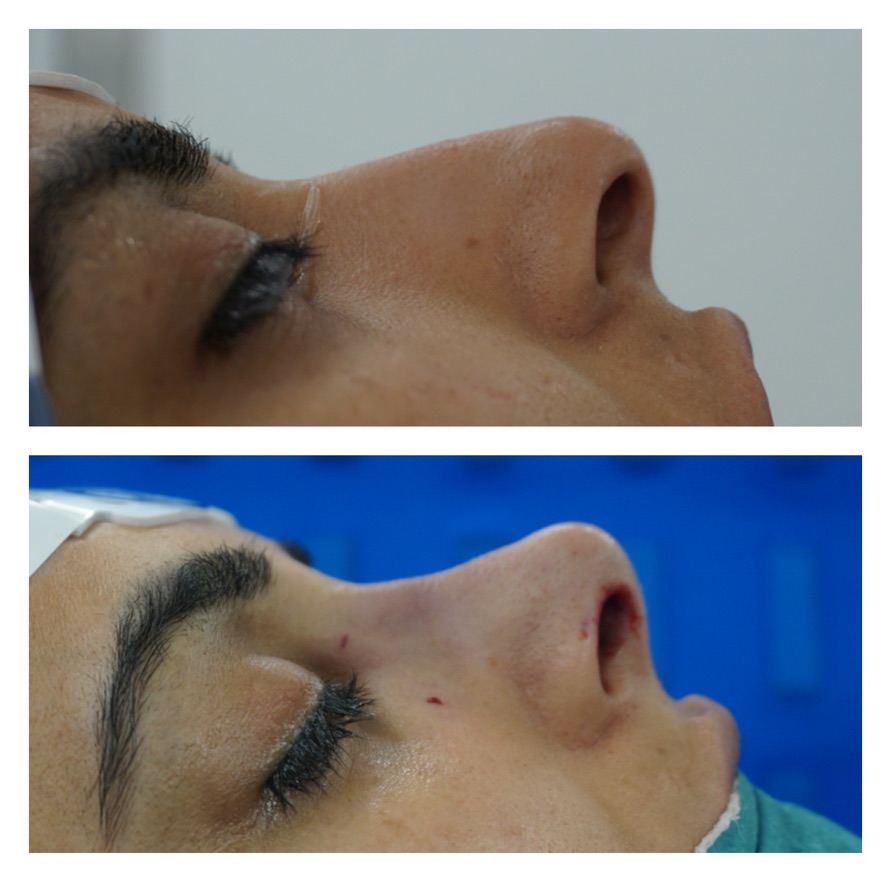

NASAL POLYPS
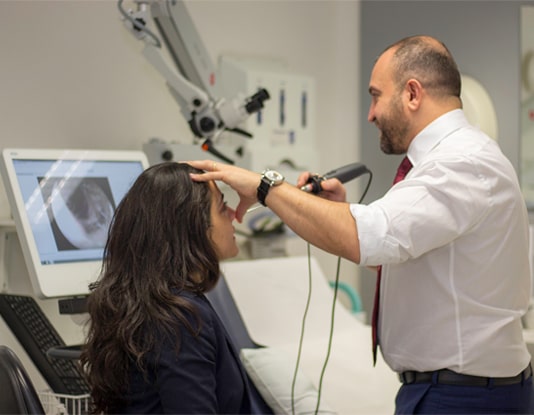
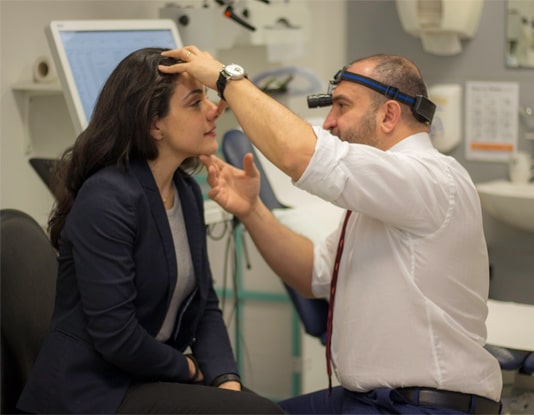
Nasal polyps are benign mucosal growths arising from the mucosal lining of the nose and sinus disorders cavities. They are usually inflammatory in origin and non-cancerous. Patients often remain unaware of them, and the clinic diagnoses them through a close endoscopic examination of the nasal cavity.
Their appearance resembles a cluster of small bags full of mucus and can cause obstruction of the nasal cavity, sinusitis, and loss of sense of smell. Although chronic sinusitis can exist without nasal polyps, they are often associated with it. Treatment options for nose and sinus disorders, including investigation and treatment for nasal polyps, mirror those for chronic sinusitis. However, patients typically receive a brief course of steroid tablets to reduce the polyps and alleviate sinus obstruction. Otherwise, the treatment typically involves topical steroid treatment, antibiotics, and nasal douching with saline water.
Surgical treatment is via endoscopic sinus surgery and balloon rhinoplasty. Mr. Anwar will confirm the diagnosis following a full clinical history and examination, including an endoscopic fiberoptic examination of the nasal cavity in the clinic, and he will discuss the most appropriate treatment plan during the consultation.
TREATMENTS
SEPTOPLASTY
The nasal septum is the midline partition of the nose that separates the right and left nasal cavities. The nasal septum is composed of both cartilage, which is the soft and malleable frontmost part of the partition, and bone, which is the deeper part of the partition that the patient often cannot feel. One of the most common deformities in the human body is septal deviation. While most patients are unaware of their septal deviations, some may present to ear, nose, and throat specialists with symptoms of nasal obstruction due to a deviated nasal septum. Commonly, a deviated nasal septum would have two components: the convex part (semi-circular protrusion into the nasal cavity) and the concave part (deep cavity within the midline partition of the nasal cavity).
Understanding Nasal Obstruction
The convexity of the nose affects the obstructed side, while the concavity side remains widely open. Therefore, a deviated nasal septum often causes a single-sided obstruction symptom. However, an 'S'-shaped deformity of the nasal septum and bilateral nasal obstruction is not uncommon, especially if the deviation is caused by a previous injury to the head and nose. Mr. Anwar will take a detailed history and examination of your nasal symptoms and your nose in order to establish if your nasal obstruction is caused by mainly a nasal septal deviation and rule out other causes like rhinitis or chronic sinusitis before discussing the option of surgery to correct the deformity via a septoplasty. Patients may experience a combination of physical obstruction due to the septal deviation, along with symptoms of rhinitis and sinusitis.
Procedure with Minimal Recovery Concerns
The surgery is performed as a daylong procedure, and no external scars will be visible, as all cuts will be within the inside of the nose. Patients need not worry about bruising following this procedure. However, expect minor bleeding and aching following septoplasty. We will not apply any external casts or plasters to the nose after the isolated septal surgery. Further details will be discussed with the patient during a face-to-face consultation with Mr. Anwar.
BALLOON SINOPLASTY AND TUBOPLASTY
Is the gold standard surgical treatment for chronic sinusitis? Mr. Anwar has a special interest in this particular area of ENT surgery and has vast experience in performing endoscopic sinus surgery with a high success rate and positive long-term outcomes for his patients. Typically, Mr. Anwar performs the surgery as a day surgery, allowing patients to return home the same day. The keyhole surgery leaves no visible external scars, and the expected side effects are minimal, usually limited to minor bleeding and postoperative infection. Mr. Anwar will discuss the full details of the operation upon consultation.
Endoscopic Balloon Sinoplasty: In recent years, the use of a balloon catheter for balloon dilatation of obstructed sinus openings has increased in popularity, as it is associated with fewer complications and quicker recovery. The operation is performed commonly under general anaesthesia, although in rare occasions, it can be performed under local nesthesia. The approach is similar to endoscopic sinus surgery but would include passing a small-cuffed catheter into the sinus opening and inflating the balloon to dilate the sinus opening and drain any retained mucus and secretions within the sinus cavity. Mr. Anwar possesses extensive experience in this surgical technique and has received accreditation for implementing it at his current NHS-based Trust, Chelsea and Westminster NHS Foundation Trust.
ENDOSCOPIC SINUS SURGERY
Mr. Anwar is providing a novel therapeutic technology to his patients that revolutionized the management of frontal sinus disease and eustachian tube dysfunction, referred to as Balloon Sinus Dilatation and Balloon Eustachian Tuboplasty, respectively. Recurrent frontal sinus disease can be caused by damage to the drainage pathway of the frontal sinus (the air pocket within the bone of the forehead) during a routine Endoscopic Sinus Surgery (FESS) that subsequently causes scarring and further stenosis of the sinus opening (ostia). Balloon frontal sinuplasty offers a minimally invasive and less damaging procedure, which causes less scarring and future stenosis of the frontal sinus ostia. It also reduced the rate of recurrence and the need for subsequent surgeries.
Eustachian Tube Dysfunction (ETD) in adults is often caused by frequent air travel, post-viral upper respiratory tract infection, and chronic rhinosinusitis. They are often transient and might be managed successfully with a long-term topical nasal steroid. Short-term ventilation tube insertion (grommets) is another way of dealing with ETD when topical medical treatment alone fails. Balloon Tuboplasty offers a minimally invasive procedure with several positive studies supporting its effective use in ETD as a one-off alternative to ventilation tube insertion. It works by inserting a balloon via the nose into the eustachian tube orifice and dilating the cartilaginous tube.
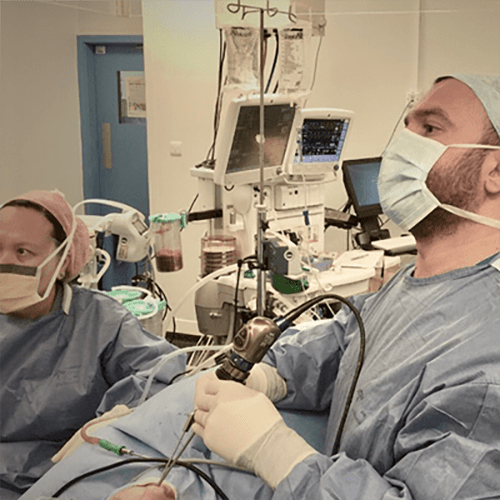

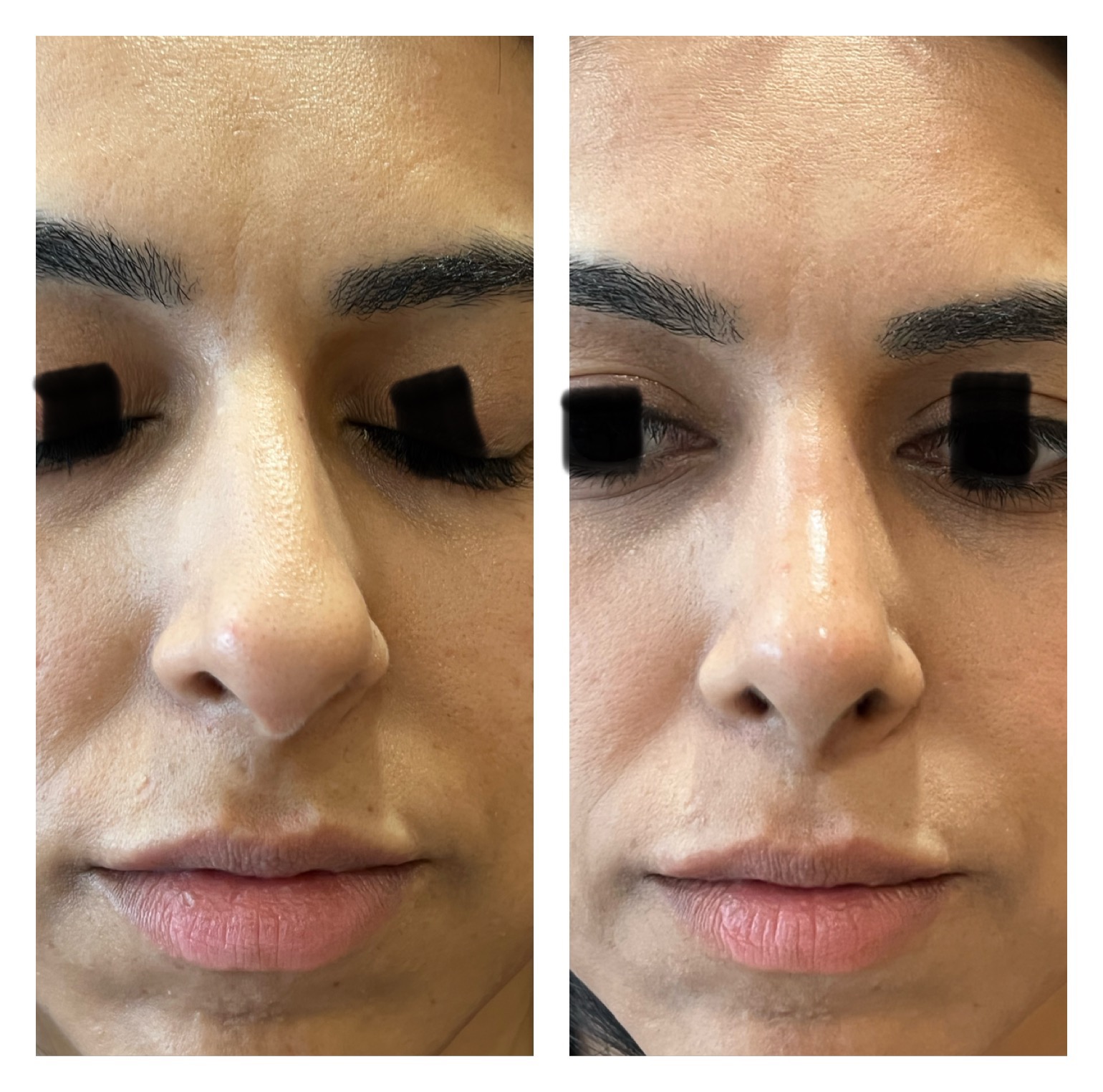
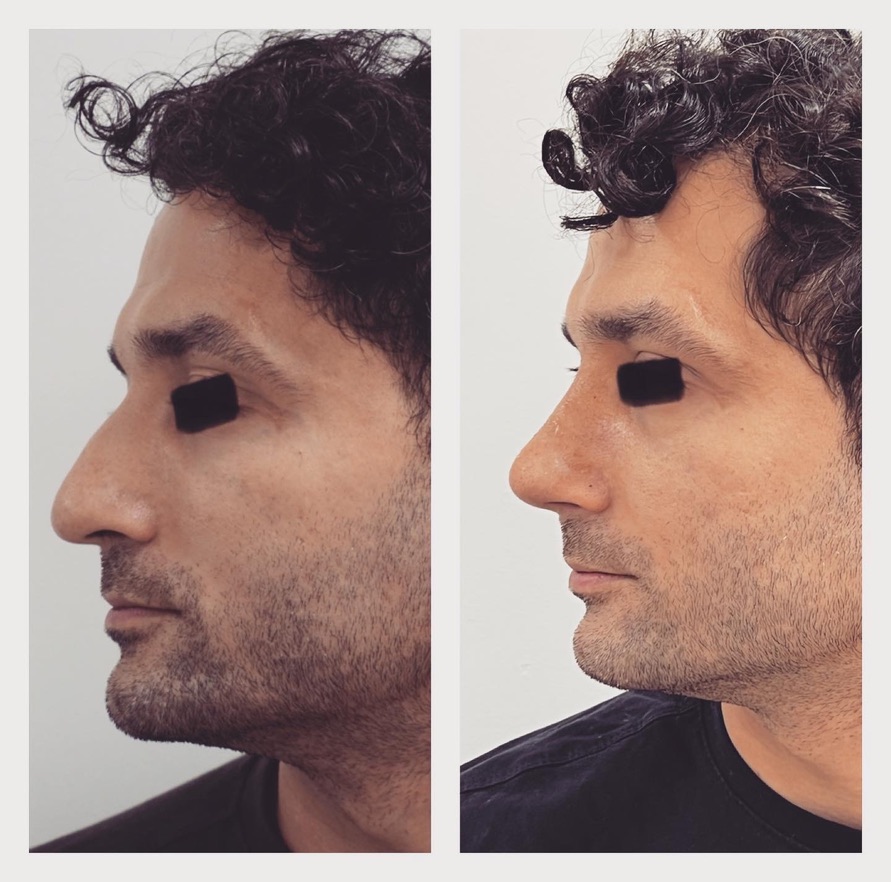
RHINOPLASTY
Rhinoplasty, more commonly “nose-job” surgery, offer to patients with external deformities of the nose, either caused by trauma or “birth defects.” Despite its common perception as a cosmetic procedure, rhinoplasty can enhance nose functionality when the external deformity impairs nasal airflow, a condition known as nasal valve compromise.
Mr. Anwar has experience with nose and sinus disorders performing rhinoplasty surgery to enhance the nose's overall appearance (straightening a deviated nose and/or reducing its size) and functionality (nasal valve surgery).
Rhinoplasty performe either via an internal “close” approach (no visible scars externally) or an external “open” approach (a small incision made at the columella and a small soft bridge separating the two nostrils). During the initial consultation, Mr. Anwar will discuss the details of the surgery, and likely arrange a follow-up consultation after a "cooling-off" period. During this consultation, he will arrange for the patient to have clinical photographs for better pre-operative surgical planning and documentation. Typically, Mr. Anwar performs the surgery in a single day, and patients should anticipate some degree of bruising and swelling after the procedure. At the end of the operation, we apply a plaster cast or a ready-made splint over the nose bridge to fix it in place. We will arrange a follow-up appointment for the patient to see Mr. Anwar a week after the initial surgery to remove the cast or splint.

